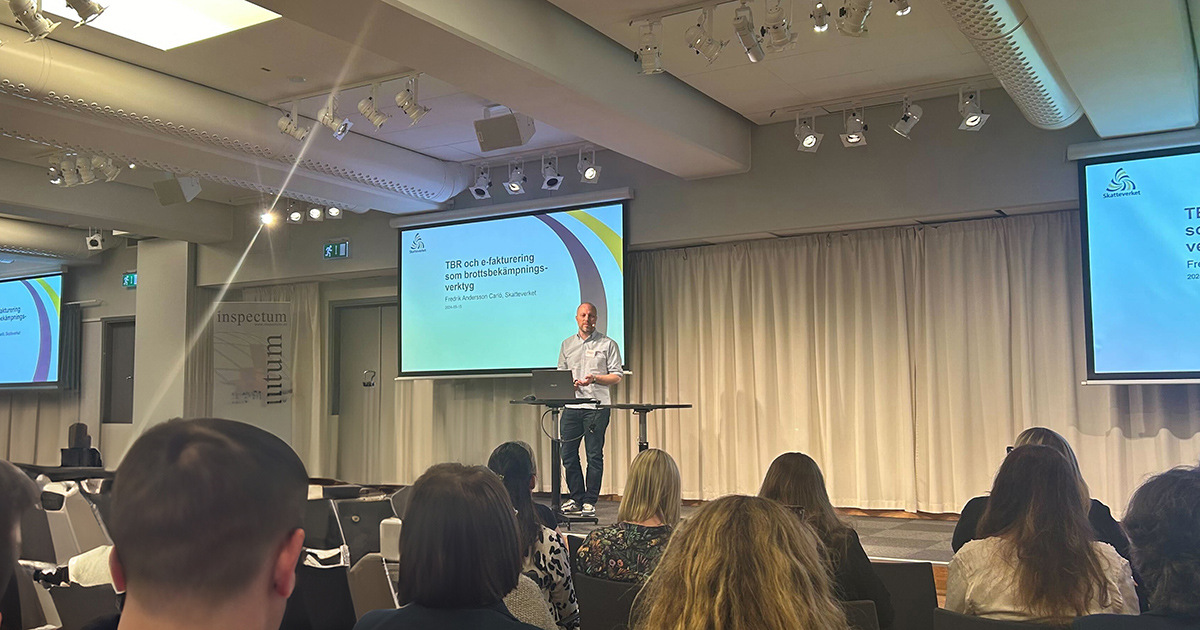VAT gap strong reason for real-time reporting
The proposed new VAT directive includes a requirement for digital real-time reporting. Currently, EU countries are losing 34,000 SEK per second in missed VAT revenues.
In 2020, EU Member States lost an estimated SEK 1 trillion (EUR 93 billion) in lost VAT revenue. According to a report released by the European Commission in 2022, the Commission notes that the EU loses SEK 34,000 per second in missed VAT revenue.
In other words, the gap between expected and actual VAT revenue is gigantic. It is therefore logical that this gap is the single biggest reason why the VAT rules for cross-border trade have been reviewed and updates presented in the form of a comprehensive package of measures entitled VAT in the Digital Age.
VAT is a very strong source of revenue at national level, but it is also a significant financial item for the EU budget. 0.3% of VAT collected at national level is transferred to the EU as own resources, which represents 12% of the total EU budget.
There are thus strong economic reasons to plug existing holes in the current VAT system. Significant revenue is lost due to VAT fraud, evasion, avoidance, bankruptcies and financial insolvency. Incorrect calculations and administrative errors also lead to non-payment of VAT.
Technology promotes fair taxation
VAT rules have also become outdated. Almost 30 years old, they are ill-suited to a business market that has long been operating in a digital age and has taken on a different profile. In establishing a fair and efficient taxation system, it is crucial to pay close attention to technology and establish solutions that go hand in hand with digital developments.
The modernization proposed by the European Commission is designed accordingly. VAT reporting obligations will be adapted to today's conditions by introducing digital reporting requirements. This way, the information that taxable persons must provide to tax authorities for each transaction will always be in a standardized electronic format.
The whole new revised VAT management is based on a digital process. Transactions must be reported to the tax authorities within two days of the invoice being issued. The tax authority will in turn transmit the information within one day to a central VIES (VAT Information Exchange System) that the Commission will provide to the EU Member States.
Sweden in the spotlight
However, the VAT gap varies considerably from country to country. Looking at VAT compliance, Sweden is among the best in class. The 2022 European Commission report states that the smallest gaps were found in Finland (1.3%), Estonia (1.8%) and Sweden (2.0%). In the case of Sweden, the total difference between the expected VAT revenue - based on VAT legislation and supplementary rules - and the amount actually collected is around SEK 10 billion.
Inabsolute terms, the largest gaps in VAT compliance were found in Italy (SEK 296 billion) and France (SEK 159 billion).
It is probably Sweden's comparatively small gap that makes the Swedish government wary of the European Commission's package of proposals. The government's position can be read in a factual memorandum from the Ministry of Finance, which reads:
"The government welcomes work aimed at preventing VAT fraud. Administrative cooperation and information exchange are important in this context. However, it is important that VAT rules are simple and clear. They should not impose heavy costs and administrative burdens on businesses. The Government also supports measures to promote cross-border trade and the ability of businesses to compete on a level playing field."
THIS text is part of a detailed description of


